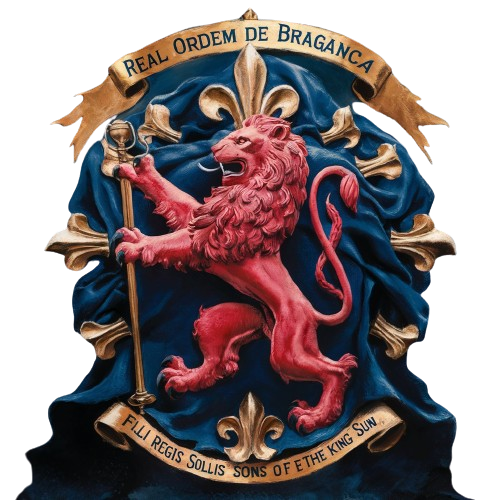List of Palaces
Castelo de Bragança, Bragança: Medieval castle that played a significant role in the history of the House of Bragança, mainly in the period before the founding of Portugal.
Ducal Palace of Bragança, Guimarães: Although it was not the residence of the dynasty’s monarchs, it is an important historical landmark associated with the House of Bragança.
Sintra National Palace, Sintra: Fortified medieval palace used, generally in the summer, by Portuguese royalty since the time of the first kings.
São Jorge Castle Palace, Lisboa: Since 1147, the conquest of Lisbon, this city has acquired the status of the main administrative and political center of the kingdom and, due to its centrality as well as its excellent sea port, contributed to making it the capital of the kingdom and therefore this palace becomes the main royal residence.
Leiria Castle Palace, Leira: King Dom Dinis probably spent the most time here. The miracle of Queen Saint Elizabeth’s roses according to legend happened here.
Royal Palace of Évora, Évora: Also known as the Royal Palace of São Francisco and the Palace of D. Manuel I. It is a former royal residence of the Kings of Portugal in the capital of Alto Alentejo. Until the end of the 18th century, this city was practically the second in the country in terms of economic importance, population and from a strategic point of view as an advanced line for the defense of the capital and support for the border fortifications.
Royal Monastery of Nossa Senhora da Conceição, Beja: The Convent of Nossa Senhora da Conceição was founded by order of the first dukes of Beja, D. Fernando and D. Brites, parents of Queen D. Leonor and King D. Manuel, and was one of the richest convents in the south of the country, built exactly in the continuation of the Paço dos Infantes.
Paço Ducal de Vila Viçosa, Vila Viçosa: Residence of the Dukes of Bragança before ascending the throne, later country house of the kings until the end of the monarchy.
National Palace of Mafra, Mafra: This palace and convent commissioned by D. João V to celebrate the birth of his son D. José who succeeded him on the throne. From here D. Manuel II went into exile.
Palácio da Ribeira, Lisboa: It was the replacement for the medieval palace located in Castelo de São Jorge, which was destroyed by the 1755 earthquake.
Real Barraca da Ajuda, Lisboa: Where the Royal Family lives permanently after the earthquake of 1755, until the fire of the Real Barraca, in 1794. King D. José, traumatized by the earthquake, preferred this solution to the detriment of a masonry palace .
Royal Palace of Salvaterra de Magos, Salvaterra de Magos: Also called Royal Palace of Salvaterra de Magos, it was a royal residence and hunting lodge of the Portuguese royal family in this town in Ribatejo. On his return from the first voyage of discovery of America, Christopher Columbus was received in audience by the queen who was there and who went to report on the events that occurred during the expedition. Built in the 16th century, it was a privileged residence in the 18th century and had its golden age during the reign of D. José I, and was destroyed by a fire in 1828. Today, only the chapel and the falconry remain.
Quinta Real de Caxias, Caxias, Oeiras: Property of the Casa do Infantado, it was built in the first half of the 18th century by Infante D. Francisco de Bragança, son of D. Pedro II and D. Maria Sofia de Neuborg, brother of D. John v.
National Palace of Queluz, Sintra: Summer Residence of D. Pedro III.
Palácio de São Bento, Lisboa: Originally a Benedictine monastery, it was converted into a temporary royal residence in the early 19th century, during the French occupation of Portugal.
Palácio das Necessidades, Lisboa: Official residence of D. João VI and later D. Maria II.
Belém National Palace, Lisboa: Official residence of King Luís I.
Ajuda National Palace, Lisboa: It became the main residence during the reign of D. Luís I and remained as such until the end of the monarchy.
Pena National Palace, Sintra: Built in the 19th century by D. Fernando II, it became his summer residence.
Cascais Citadel Palace, Cascais: Used as a summer residence by the royal family during the reign of D. Carlos.
Note:
These palaces served not only as royal residences, but also as administrative and cultural centers that influenced the history of Portugal. The list above includes the main palaces related to the different dynasties, but there are many other historic buildings that also played important roles in the history of the Portuguese monarchy.
Medieval castles had an interior fortified area called the alcácer, made up of a courtyard from which the mayor’s residence and the keep were accessed.
During the Middle Ages, the court was itinerant due to the need for proximity to territories that needed greater attention from the king, or due to the imperative of feeding the servants of the royal palace, including the army.
During these trips, the court generally established itself in one of the many fortresses that it covered, the geography of the kingdom and the houses where a member of the royal family spent and stayed at least one night were called “paço”, that is, palace in the broadest sense. These Palaces could be fortifications, royal properties, convents, monasteries or houses of nobles who had, among other obligations arising from their social position, the duty of hosting the royal entourage.
